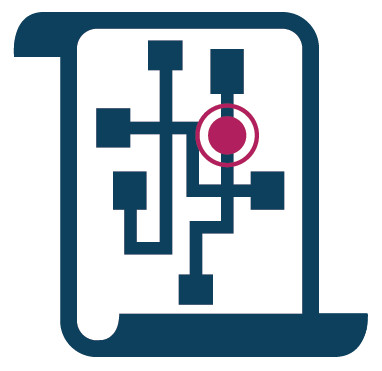Program Will Help Target Women’s Early Cardiovascular Risks | Resource | Baptist Health South Florida
Women and heart disease — despite endless educational campaigns — is still a combination that surprises many, especially women and some of their caregivers. Yet, heart disease remains the No. 1 killer of women. And early heart disease — or contributing risk factors such as a family history or high blood pressure during pregnancy — are more often overlooked in younger women. There’s also coronary microvascular disease (sometimes called small artery disease) which occurs more often in young women. Andrea Vitello, M.D., cardiologist at Miami Cardiac & Vascular Institute. Andrea Vitello, M.D., cardiologist at Miami Cardiac & Vascular Institute, is sifting through the dynamics of properly diagnosing and treating heart disease and related conditions in women. She is in the early stages of developing a women’s cardiovascular program at the Institute. “One of my goals is to help identify a younger patient population that might not otherwise be aware of their cardiovascular risk,” explains Dr. Vitello. “Women certainly consider seeing a physician a very intimidating and daunting process. One of my strengths is that I’d like to really explain a situation, a condition to a patient, as much as they want to learn and hear about it.” Too many women find out at an emergency room or at the doctor’s office that they have suffered a heart attack — or need medication or require a coronary stent procedure to open up blocked arteries or even more complicated bypass surgery. Studies have shown that women often put the health of other family members ahead of their own well-being, and they often dismiss subtle symptoms. Guidelines for medical professionals have evolved to better diagnose heart attacks in women. Chest pain is the most common symptom among both men and women. However, women more commonly have accompanying symptoms that include nausea, palpitations, and shortness of breath. Women also are more likely to have a heart attack without chest pain. Changing the ‘Women and Heart Health’ Mindset But proper treatment needs to start early for many women, said Dr. Vitello. For that to happen, the current mindset needs to change regarding women and heart health. “In general, female patients might not consider themselves at a very high risk of cardiovascular disease,” said Dr. Vitello. “Yet, we know that cardiovascular disease is the No. 1 killer in this country. But why is it that we don’t give it the same merit? Why do many women brush it off? Maybe they’re worried about their other family members. Maybe they’re not really concerned that they’ve got a problem.” More clinical studies have been done in male heart patients, which is one reason why cardiovascular disease is possibly less well understood in women, she said. “We’ve recently changed guidelines to include some symptoms that might affect women more than men,” said Dr. Vitello. “I really want to help bring some light to our female patients, and try to identify those that might be at a higher risk of cardiovascular disease in general — but might not otherwise know it.” Women and ‘Microvascular Disease’ Women more frequently develop coronary microvascular disease, or MVD, and it occurs particularly in younger women. The risk factors for MVD are the same as for coronary artery disease, including diabetes, high blood pressure and high cholesterol. Diagnosing MVD was previously a challenge. According to the America Heart Association, PET (Positron Emission Tomography) scans and other types of imaging are now available which measure blood flow through the coronary arteries and can detect MVD in very small blood vessels. “We certainly know that it’s more common in female patients and very hard to diagnose based on current traditional, readily available tests that most people will end up getting,” said Dr. Vitello. “But PET scanning can give us a little bit more information about myocardial (muscular tissue of the heart) blood flow.” Preventing Heart Disease in Women Helping women understand lifestyle modifications that can reduce their risk of heart disease will be a vital component of the new program. “High blood pressure, for example, is becoming a more common trend in this country as weights and dietary habits have changed,” said Dr. Vitello. “Being mindful of what that looks like for women down the road, if they don’t change their habits or change their behaviors, is really important. We need to be more proactive about these discussions.” Having a “game plan” for women and heart health is another major goal of the program. “We want to make sure they have a game plan going forward with regards to their blood pressure, their cholesterol, other risk factors, and how they’re counseling their family,” said Dr Vitello. “Additionally, what types of dietary and exercise choices they are making — because it will certainly impact them at this stage of the game, and for the rest of their lives, no matter what their age.”


 Autism testing for kids 4 and under in Arlington Heights, Deerfield, and Naperville fills a much-needed gap for local families.
Autism testing for kids 4 and under in Arlington Heights, Deerfield, and Naperville fills a much-needed gap for local families. Boost Efficiency and Elevate Patient Care With DocVA’s New Virtual Assistant Services
Boost Efficiency and Elevate Patient Care With DocVA’s New Virtual Assistant Services New patent granted assists hospitals with greater coverage to support drug waste events
New patent granted assists hospitals with greater coverage to support drug waste events Enhancing water and medical gas system management and emergency preparedness through comprehensive visual surveying documentation
Enhancing water and medical gas system management and emergency preparedness through comprehensive visual surveying documentation American Heart Association consortium advances development of evidence-based health tech solutions
American Heart Association consortium advances development of evidence-based health tech solutions